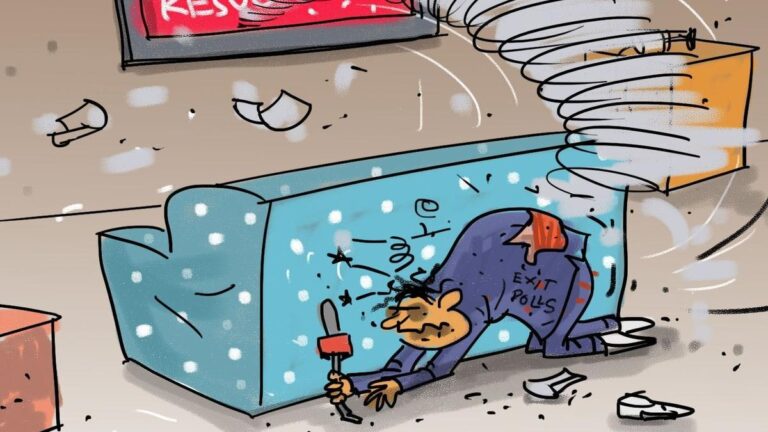As the end of election season always brings with it a final procession of political pundits and journalists blowing their trumpets and waving “I told you so” flags, some must be humiliated. Some have the privilege of humiliating themselves privately, while others, like a respected pollster, shed tears on national television.
Also read | The exit polls were a failure
For now, let us set aside the fuss and tears and consider the most basic question: Why are voters misled? It is unreasonable to think that voters have to tell the truth to pollsters and journalists. But voters, especially in rural areas, are opening up and expressing their political preferences frankly. We should be grateful for that. Many of us who have waded into the treacherous waters of election forecasting are victims of the “Bradley effect.”
In 1982, Tom Bradley, a longtime African-American mayor of Los Angeles, ran as the Democratic candidate for Governor of California against Republican candidate George Deukmejian, a white Armenian. Most polls taken in the final days before the election showed Bradley leading by a large margin. However, to the surprise of pollsters, Bradley lost the polls. Post-poll surveys revealed that many of the white voters who had claimed to vote for Bradley had in fact voted for Deukmejian. They gave pollsters answers that they believed would be more acceptable to the public and, in this case, would be considered racially correct.

We have seen the “Bradley effect” ourselves this election season, as trust in the media has declined significantly. I have lost count of how many times I have been accused of working on the ruling party’s payroll during this election season. Voters often assume that the political positions of journalists and research organisations are aligned with those of the ruling party.
One group of voters that particularly puzzled pollsters and journalists were Dalits. Post-vote analysis showed that Dalit voters, especially non-Jatavs who had been loyal to the Bharatiya Janata Party for the past decade, changed their loyalties. Of the total 131 seats reserved for scheduled castes, the BJP’s tally fell to 55 (from 77 in 2019).
WATCH: How are exit polls conducted?
Lumping all Dalit voters together is an oversimplification bordering on contempt, a crime we routinely commit in the name of political analysis. At the bottom of the social pyramid, especially in villages where caste hierarchies remain more or less intact, Dalit voters are usually quiet about their choices. Ahead of the Lok Sabha elections, in Beruwala Chawla, Gorakhpur, I met Audesh Paswan, a local contractor. He and his friends had stopped at a tea stall for some snacks. As I poked and prodded Paswan and others sitting around him, trying to steer the conversation towards their political preferences, several of them began to analyse the merits and demerits of the two main candidates in the fray. But Paswan remained silent. “We can’t talk here, in the canteen,” he told me as we parted ways. Instead, he gave me his phone number so he could speak his mind without fear of backlash. Like Paswan, many others feel uncomfortable advertising their political support. And silent voters like him often go uncounted, leading to skewed projections.
It is no excuse, but neither journalists nor research agencies can afford to waste any more time on voters like Paswan and patiently wait for them to decide to open up.
The reason journalists have fared better than pollsters this season is that, unlike pollsters who act on data from restrictive response forms, journalists have the luxury of taking into account intangible factors such as silence.
This is a premium article available only to our subscribers. To read over 250 premium articles every month,
You’ve reached your limit for free articles. Support quality journalism.
You’ve reached your limit for free articles. Support quality journalism.
You have read {{data.cm.views}} from {{data.cm.maxViews}} Free articles.
This is the last free article.

